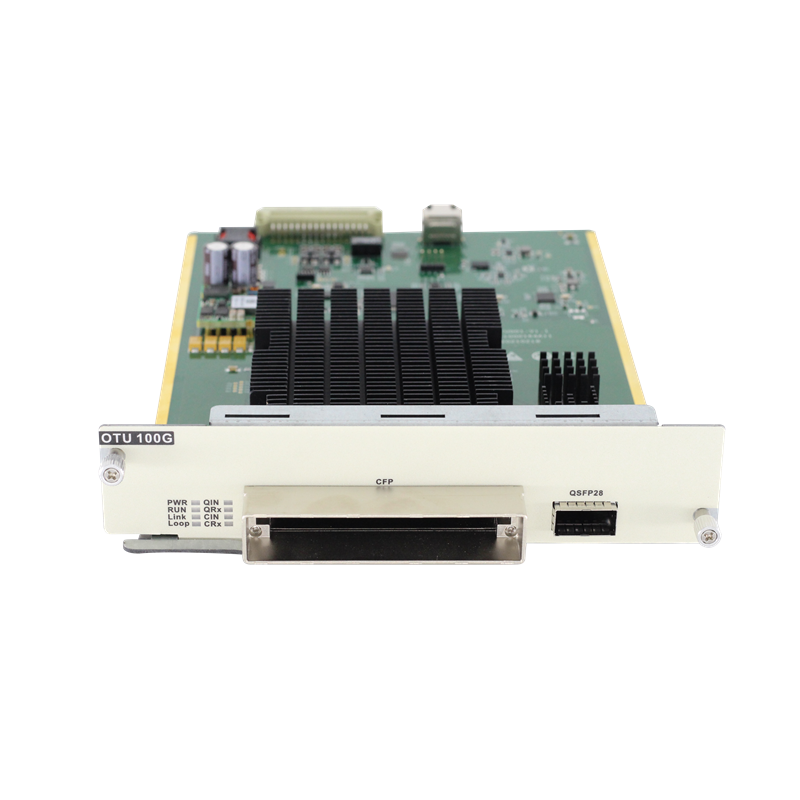1. The difference between single-mode and multi-mode fiber optic transceivers
The core diameter of the multimode fiber is 50~62.5μm, the outer diameter of the cladding is 125μm, and the core diameter of the single-mode fiber is 8.3μm, and the outer diameter of the cladding is 125μm. The working wavelengths of the optical fibers are 0.85 μm for short wavelengths, 1.31 μm and 1.55 μm for long wavelengths. The fiber loss generally decreases with the wavelength, the loss of 0.85μm is 2.5dB/km, the loss of 1.31μm is 0.35dB/km, and the loss of 1.55μm is 0.20dB/km, which is the lowest loss of the fiber, the wavelength of 1.65 Losses above μm tend to increase. Due to the absorption effect of OHˉ, there are loss peaks in the range of 0.90~1.30μm and 1.34~1.52μm, and these two ranges are not fully utilized. Since the 1980s, single-mode fibers have tended to be used, and the long wavelength of 1.31 μm has been used first.
Multimode fiber
Multimode fiber: The central glass core is thicker (50 or 62.5μm), which can transmit light in multiple modes. But its intermodal dispersion is large, which limits the frequency of transmitting digital signals, and it will be more serious with the increase of distance. For example: 600MB/KM fiber has only 300MB bandwidth at 2KM. Therefore, the distance of multimode fiber transmission is relatively short, generally only a few kilometers.
single mode fiber
Single-mode fiber (Single Mode Fiber): The central glass core is very thin (the core diameter is generally 9 or 10 μm), and only one mode of light can be transmitted. Therefore, its intermodal dispersion is very small, which is suitable for long-distance communication, but there are also material dispersion and waveguide dispersion, so the single-mode fiber has higher requirements on the spectral width and stability of the light source, that is, the spectral width should be narrow and stable. Be good. Later, it was found that at the wavelength of 1.31 μm, the material dispersion and the waveguide dispersion of the single-mode fiber are positive and negative, and the magnitudes are exactly the same. This means that at a wavelength of 1.31 μm, the total dispersion of a single-mode fiber is zero. From the loss characteristics of the fiber, 1.31μm is just a low-loss window of the fiber. In this way, the 1.31μm wavelength region has become an ideal working window for optical fiber communication, and it is also the main working band of practical optical fiber communication systems. The main parameters of 1.31μm conventional single-mode fiber are determined by the International Telecommunication Union ITU-T in the G652 recommendation, so this fiber is also called G652 fiber.
Are single-mode and multi-mode technologies produced at the same time? Is it true that which is more advanced and multi-mode is more advanced? Generally, multi-mode is used for short distances, and only single-mode is used for far distances, because the transmission and reception of multi-mode fibers The device is much cheaper than the single mode.
Single-mode fiber is used for long-distance transmission, and multi-mode fiber is used for indoor data transmission. Only single-mode can be used for long-distance, but multi-mode is not necessarily used for indoor data transmission.
Whether the optical fibers used in servers and storage devices are single-mode or multi-mode Most of them use multi-mode, because I am only engaged in communication optical fibers and are not very clear about this issue.
Do optical fibers have to be used in pairs, and is there any equipment such as single-hole single-mode fiber signal converters?
Does the optical fiber have to be used in pairs? Yes, in the second half of the question, do you mean to transmit and receive light on one optical fiber? This is possible. China Telecom’s 1600G backbone optical fiber network is like this.
The most fundamental difference between single-mode fiber optic transceivers and multi-mode fiber optic transceivers is the transmission distance. The multi-mode optical fiber transceiver is a multi-node and multi-port signal transmission in the working mode, so the signal distance transmission is relatively short, but it is more convenient, and it is unnecessary to use the construction of the local intranet. Single fiber is a single node transmission, so it is suitable for the transmission of long-distance trunk lines and constitutes the construction of a cross-metropolitan area network.
2. How to distinguish single-mode and multi-mode fiber optic transceivers
Sometimes, we need to confirm the type of a fiber optic transceiver, so how to determine whether the fiber optic transceiver is single-mode or multi-mode?
1. Distinguish from the bald head, unplug the fiber optic transceiver bald head dust cap, and look at the color of the interface components in the bald head. The inner side of the single-mode TX and RX interfaces is coated with white ceramics, and the multi-mode interface is brown.
2. Distinguish from the model: generally see whether there are S and M in the model, S means single mode, M means multi-mode.
3. If it has been installed and used, you can see the color of the fiber jumper, orange is multi-mode, yellow is single-mode
Post time: Sep-01-2022


